Introduction
The Natural History Museum, Chandigarh, is situated in the outer corner of the museum campus in Sector-10, Chandigarh, sharing the expansive space with the Government Museum and Art Gallery and the Architecture Museum. The exhibits in this museum cover 5,000 years of Indian history, from the Indus Valley Civilisation to the present day. Earlier known as the Museum of Evolution of Life or Science Museum, it was inaugurated on August 13, 1973, as one a wing of the Government Museum and Art Gallery, Chandigarh.
A key highlight of the museum is, the first-of-its-kind in Asia, a two-storeyed cyclorama depicting the evolution of life on earth. It has 14 geological landscape paintings, illustrating the origin of Earth and the evolution of life from unicellular organisms to multi-cellular plants and animals through various geological time periods. The dinosaur gallery with real fossils and models explaining the origin, evolution, and destruction of dinosaur species in the three Mesozoic periods is equally captivating. Evolution of modern man from his other hominid cousins and ancestors is another gallery worth exploration for youngsters and adults alike. There are other galleries housing significant collections of astronomy and geology, along with the fossils found at the nearby site of Masol.
History
Dr M.S. Randhawa, the first Commissioner of Chandigarh, conceptualised the idea of having a museum of science along with a museum of art and architecture in an expansive complex, in the newly formed Union Territory (UT), and laid its foundation stone in 1968. Later renamed as Museum of Evolution of Life, the museum was finally inaugurated on August 13, 1973. With gradual additions and improvement over time, it was finally rechristened as the Natural History Museum in the year 2001.
Architect
The idea of having a museum complex housing three museums of knowledge --art, science, and architecture--was concretised by Le Corbusier. The actual designing was done by Mr Shiv Dutt Sharma and his team of architects. To avoid standing out and to gel with the other two museums, the modern and minimalist style of Le Corbusier was followed.
Donors
The Museum received donations from the personal collections of Dr M.S. Randhawa, fossils and stone tools by Dr P.C. Sharma and donations from many other eminent biologists, archaeologists, and scientists from all over India.
Layout and Surroundings
The museum complex, which houses the three museums, is situated on the other side of the road parallel to the tree-lined stretches of Leisure Valley and has many open-air sculptural artworks on display. Nestled in the outer edge of the complex, the museum building is laid out in two sections that face each other. One section is reserved for the administrative office, storage spaces, and washrooms. The other section, with two levels, houses the museum collection. On the lower level, in front of the entrance, is the reception and waiting area, the Masol titled 'Redefining Past', the 'Evolution of Life Cyclorama' hall and the Museum In-charge's office. The spiral staircase based on the helix structure leads to the second level, which houses the 'Evolution of Man Gallery', the dinosaur section, and other panels describing the process of fossilisation. The museum's wall panels and exhibition cases are utilitarian in style, and ample space is provided for lighting.
Collection
Museum exhibits are organised into six galleries.
1. Evolution of Man gallery
The gallery of the Evolution of Man has displays, charts, models the fossils, and dioramas that inform us of our other hominid cousins in their various stages of evolution.
Highlights of the gallery
- Dioramas of various homo species like Neanderthals, Homo erectus, etc.
- Family chart of the genus Homo
- Tree-of-life displays of various Hominoids and Hominid species
- Early stone age tools of India
- Fossils of mammoths
- Other fossils that can be touched and felt
2. Dinosaurs of India gallery
Starting with the perception of what characteristics constitute a dinosaur and how they are different from mammals, other reptiles and amphibians, the gallery transports us to the Mesozoic era when earth's conditions were perfect for the origination of dinosaurs during the Triassic period, to the evolution of gigantic beings during the Jurassic period, and finally their extinction after the Cretaceous period due to an asteroid in Mexico.
Highlights of the gallery
- Footprints and tracks of dinosaurs
- Teeth and bones of dinosaurs
- Touch and feel exhibits
- Animals and plants that cohabited dinosaurs
- Eggs and dinosaur dung (coprolite)
3. Evolution of Life Gallery
The evolution of life on earth gallery offers a journey through the origins of our planet and life through 14 huge cycloramas, including the Big Bang and the birth of our solar system, the bombardment of asteroids, volcanic eruptions, the formation of rocks and minerals during the Precambrian period, etc. It depicts the gradual transformation of the earth, stretching over billions of years, into a place conducive to hold and nurture life including the sprouting of first living being during the Phanerozoic period to age of fishes followed by transformation of fishes to amphibians, reptiles, dinosaurs, mammals and humans, the descendants of these mammals.
4. Redefining Past Gallery
This gallery is relatively new. The fossils on display were excavated from the area of Masol in Punjab by a joint team of Indian and French archaeologists and palaeontologists under the aegis of the Society for Anthropological and Archaeological Research (SAAR). Masol is said to be the oldest site where Hominin activities have been discovered. There is speculation that the findings here could reopen a new chapter in the pre-history of the origins of man, and strengthen the view that man's evolution took place outside Africa as well. On display are the cases nestling fossil remains of some extinct and surviving species that populated the Shivalik hills millions of years ago.
5. Our Mother Earth Gallery
This open-air gallery was set up under the supervision of Prof. A.D. Ahluwalia of Panjab University. The aim of this interesting display is to bring geosciences and geo-heritage closer to the people in its own context and environment. On display are the massive chunks of rocks, of various types and ages, from nearby regions.
6. Geo Heritage Gallery
The gallery is in the process of being built, with the aim of housing plant and animal fossils.
Museum Services
The Natural History Museum shares conservation and restoration facilities with the other two museums in the museum complex, and it is situated behind the Government Museum and Art Gallery. The facilities include fumigation chambers, suction tables, thermos-hydro meters, analysis of pigments and de-acidification for conservation. The museum also shares the reference library with the other two museums, and it is situated on the first floor of Government Museum and Art Gallery. The museum organises various educational workshops in collaboration with schools on request. It also organises special tours and events during National Science Day, International Environment Day, Earth Day, etc.
30.7480941, 76.7858843
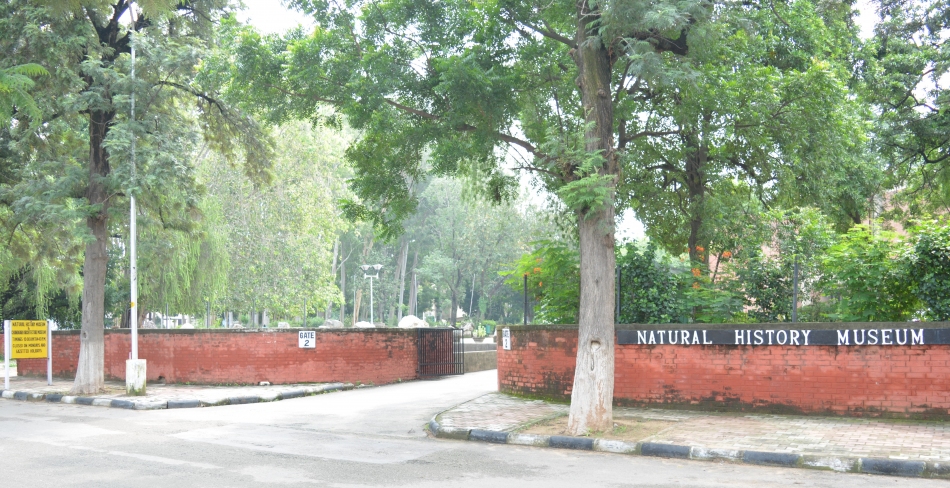
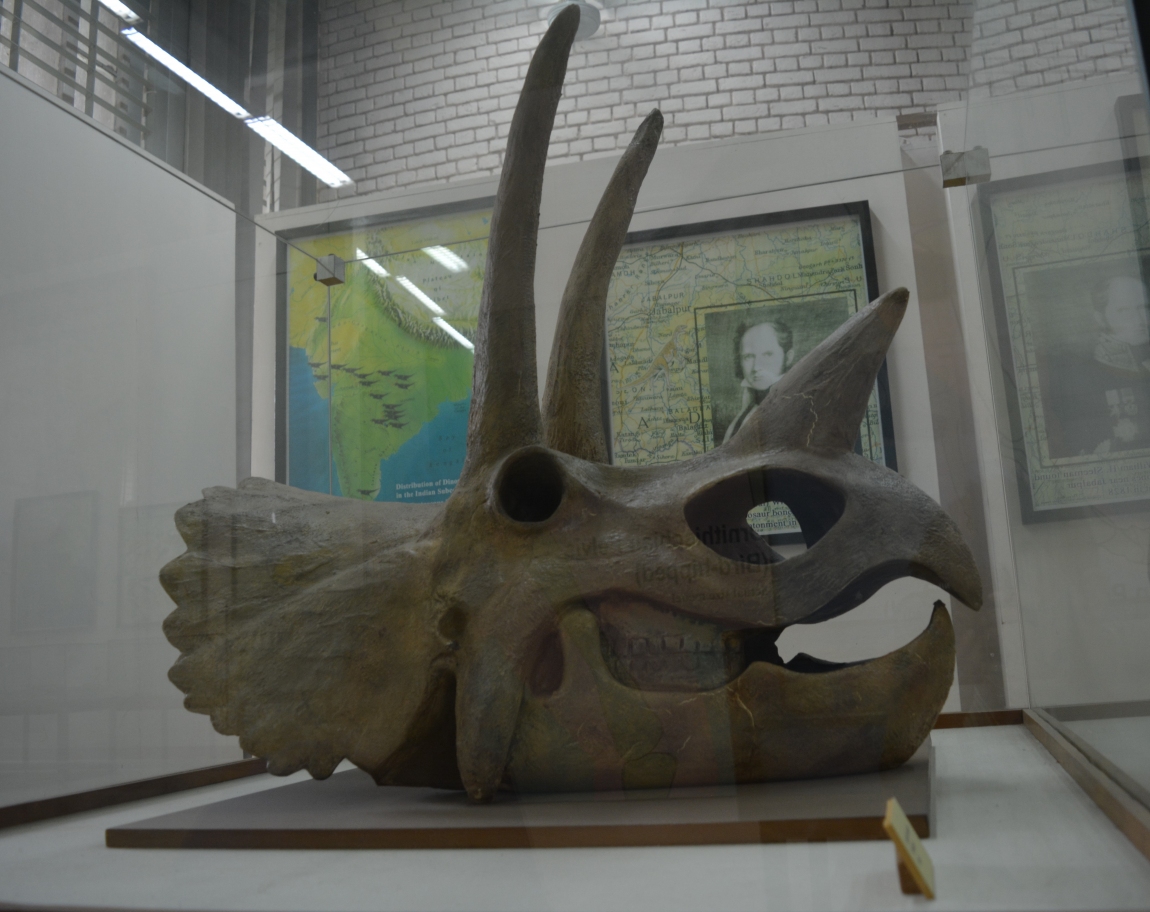
Natural History Museum houses a significant collection of dinosaur fossils. The artefact photographed here is a real fossiled head of a dinosaur.
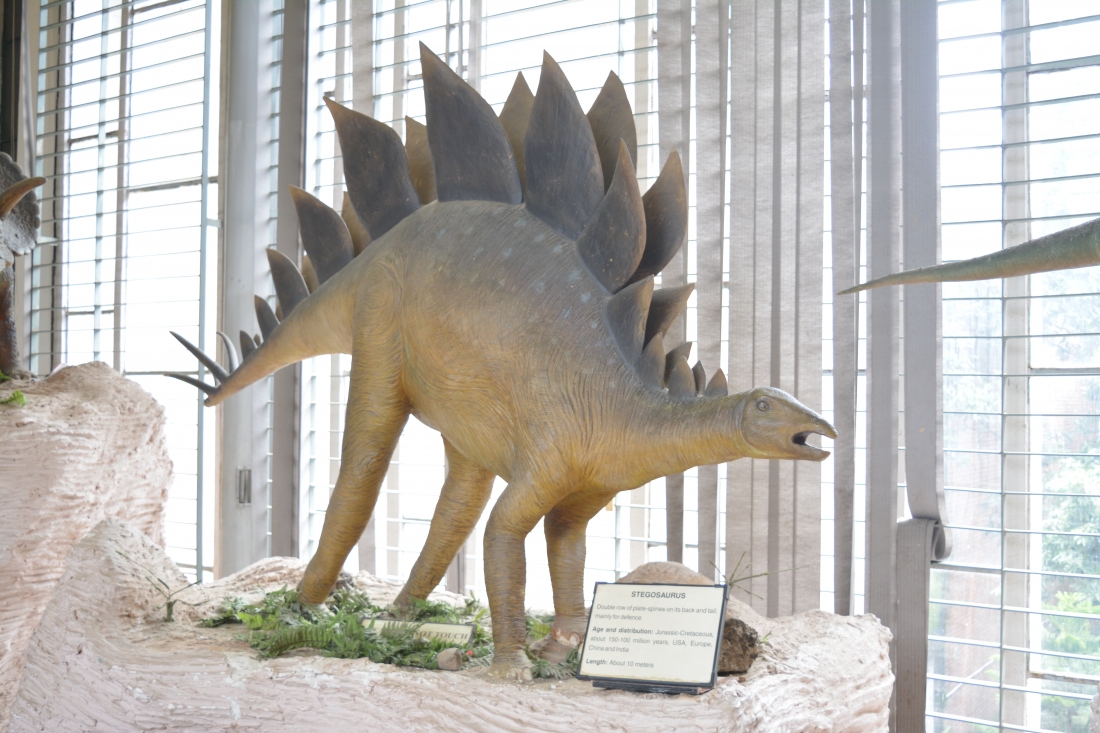
The life-size dinosaurs and miniature models of various species of dinosaurs belonging to the Jurrasic, Cretaceous, and Triassic period are on display.
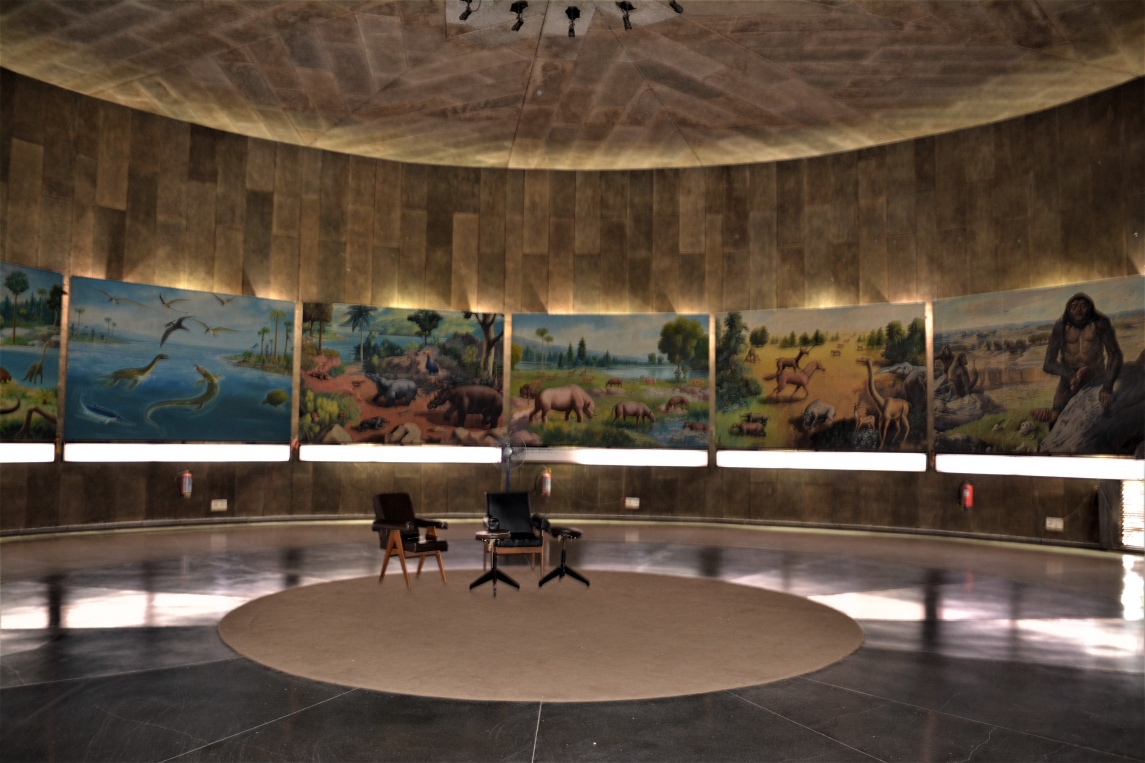
The cyclorama showing the panoramic images of the evolution of life in a cylindrical platform is designed to give the viewer a 360-degree view. This section includes fourteen hand boards painted by eminent artists of the city. This was the first of its kind section in any museum in Asia.
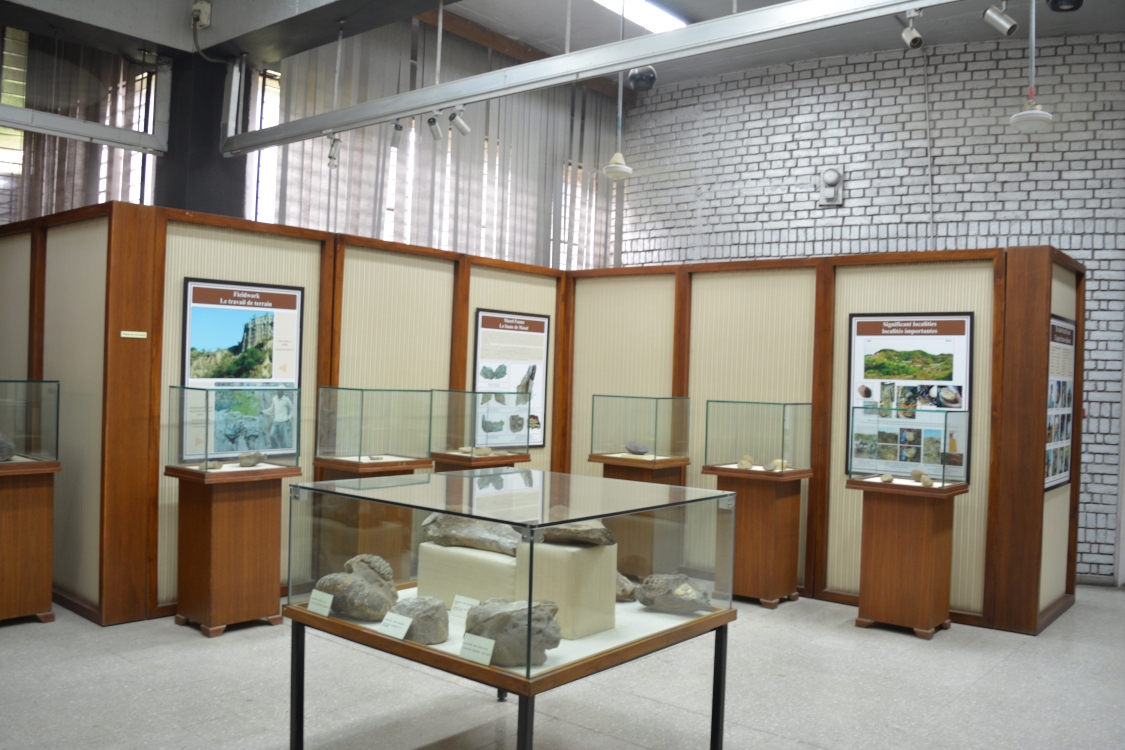
On the lower level is housed Masol titled 'Redefining Past', which contains fossils of plants, animals and human beings found at the nearby site of Masol.
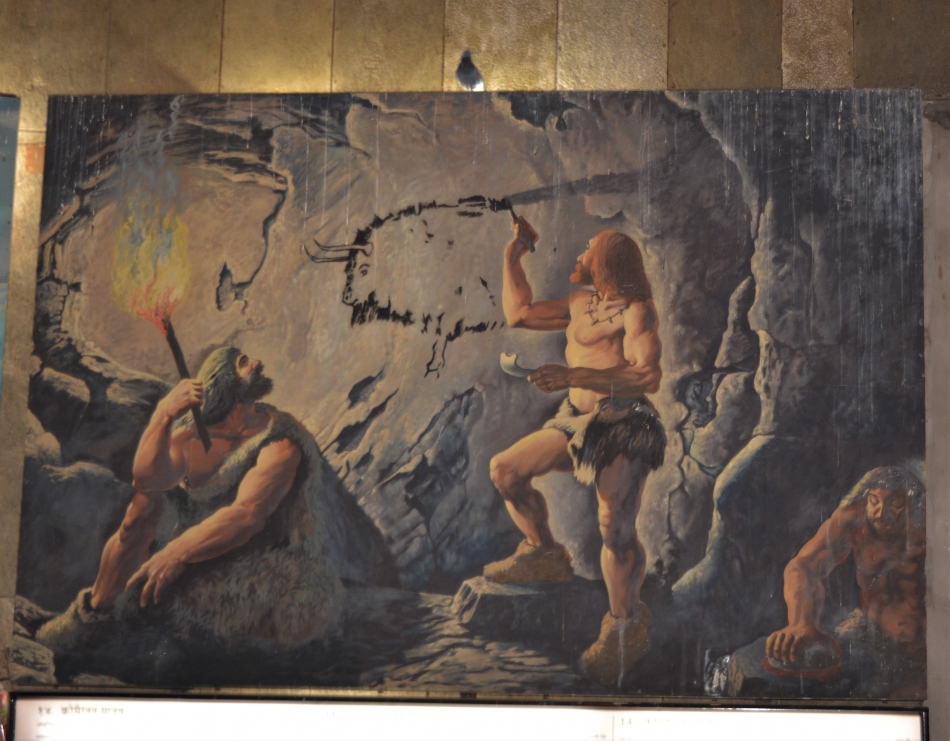
The evolution of Homo sapiens is a significant panel in the cyclorama section of the museum.
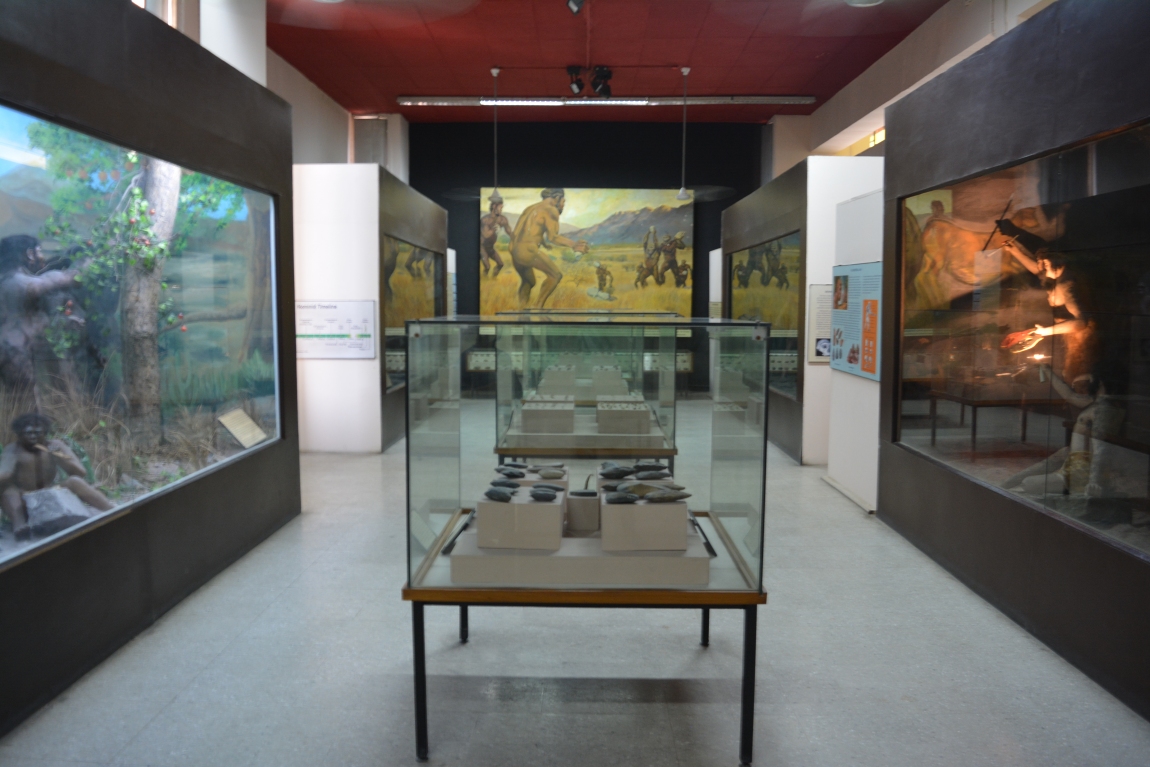
The gallery of Evolution of Man showcases models, fossils, and dioramas depicting the progression and development of Homo sapiens and its hominid cousins.
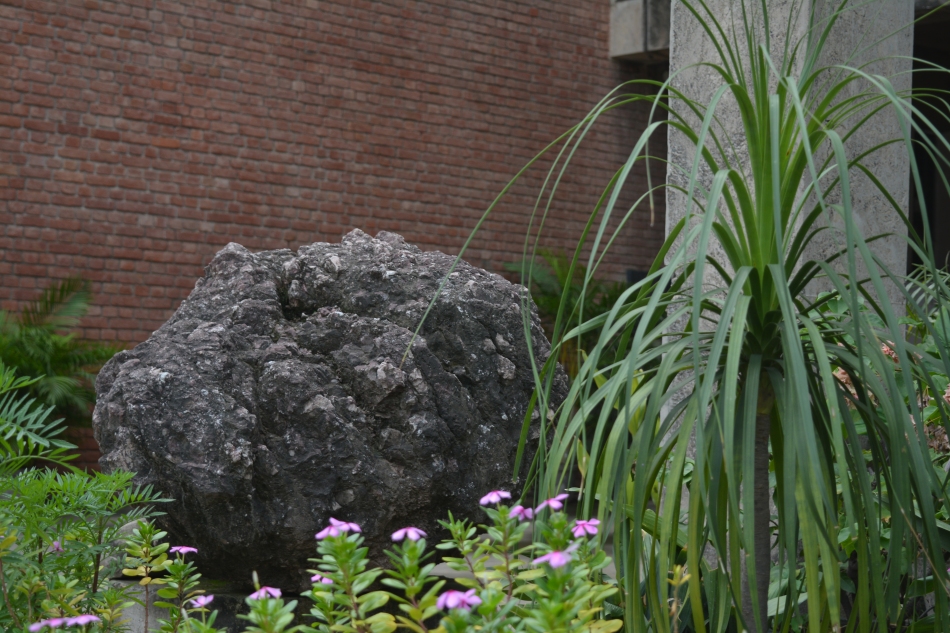
The open-air gallery aims at bringing geosciences and geo-heritage closer to people in its own context and environment. The displays are huge chunks of rocks of various types and ages from near by regions.
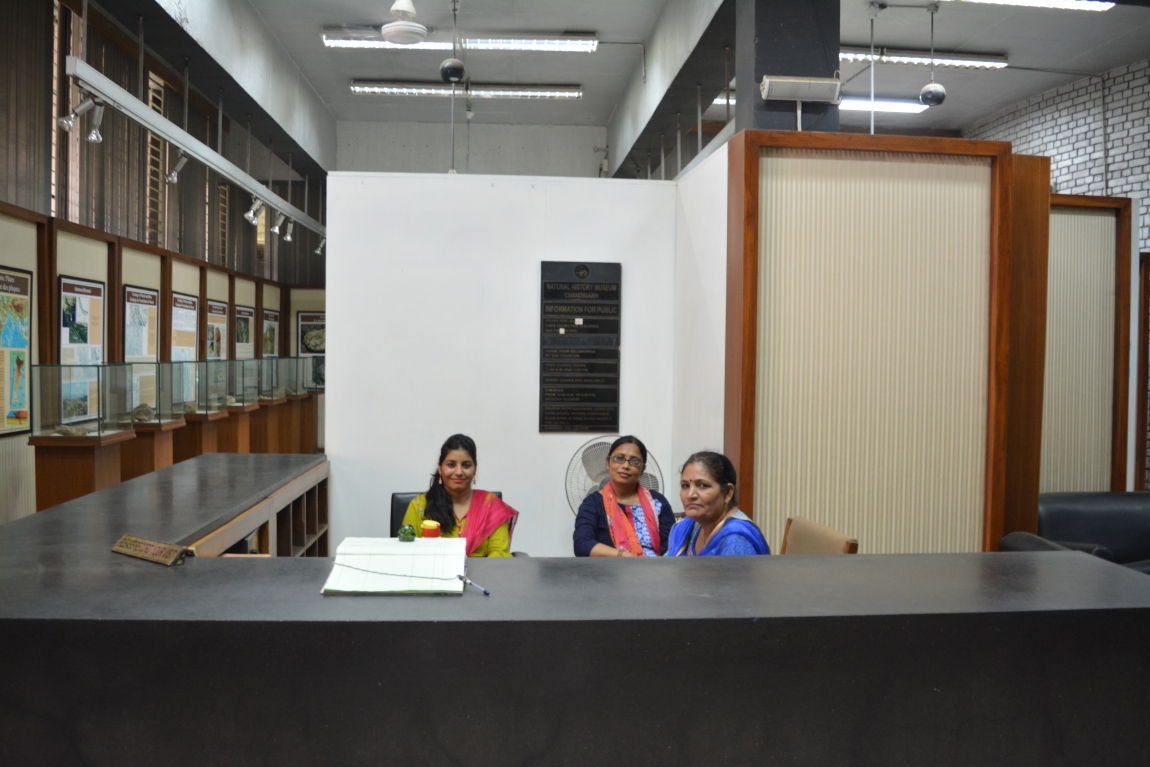
The reception area faces the entrance gate. There is a small waiting area also for the visitors to sit and take rest.
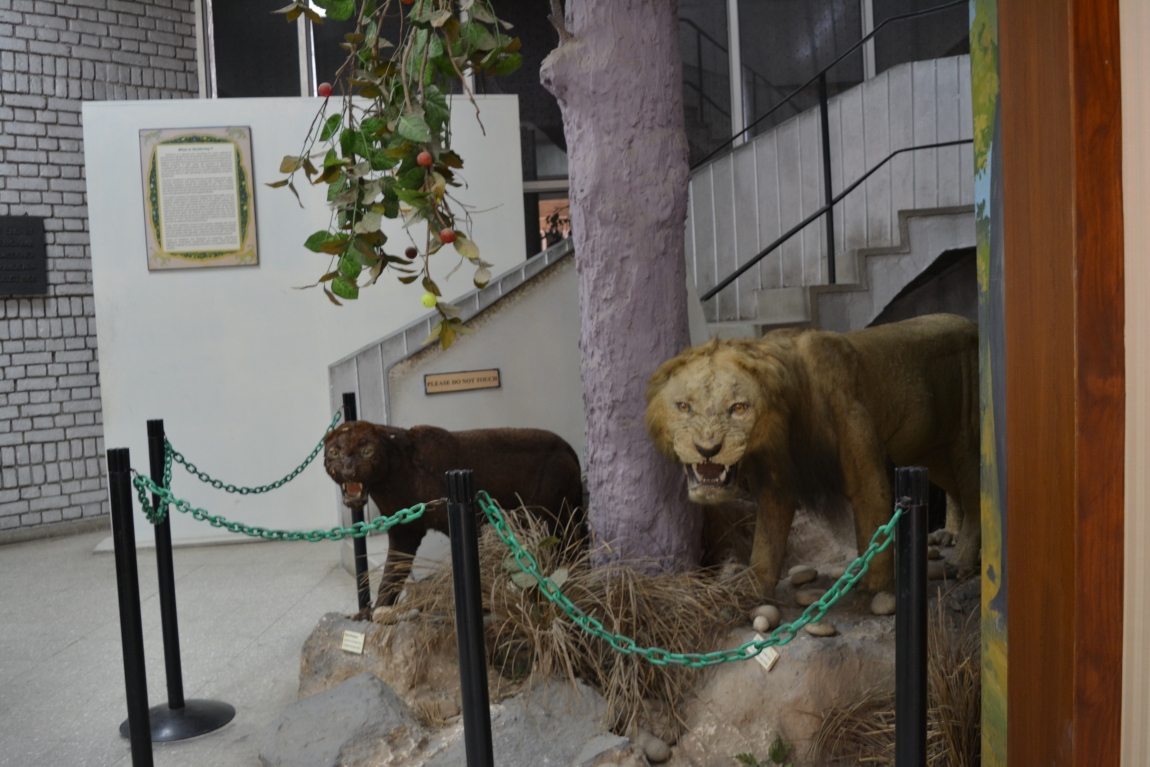
The lively taxidermy exhibits of a jaguar and other animals are a common attraction for children who come on school visits to the Natural History Museum.
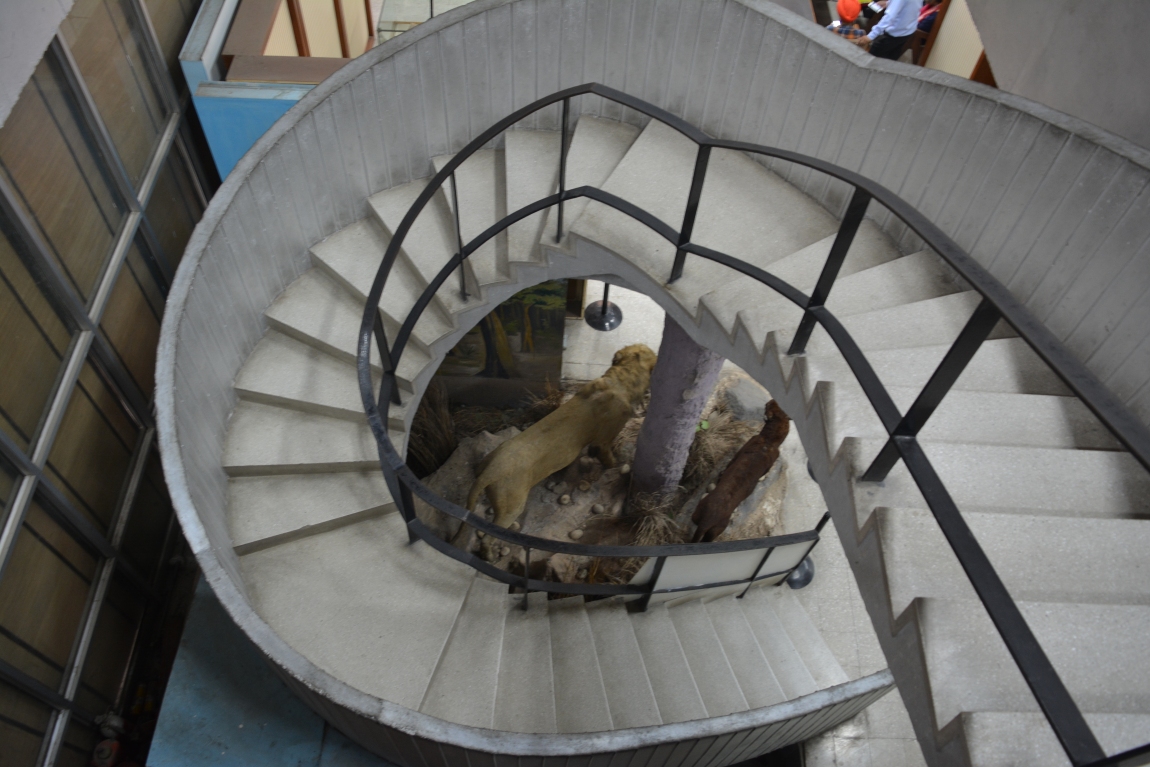
The spiral staircase connecting the two levels of the museum is modelled after the helix structure of DNA.
Free entry for kids below age 12, school groups below 10th standard, and senior citizens.
